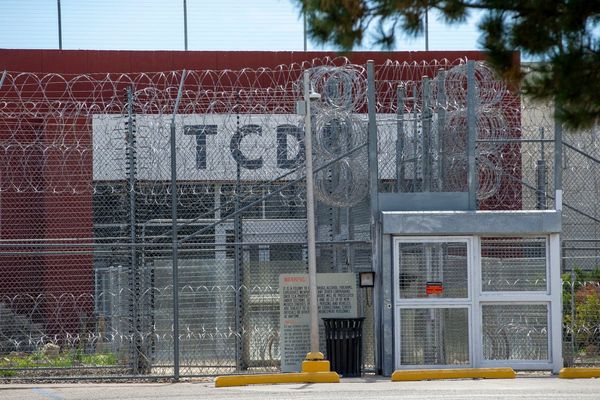
As promised, Ferrari on Tuesday afternoon revealed the latest addition to its lineup. Called the Amalfi, it's a front-engined, four-seater coupe meant to replace the outgoing Roma, using much of that car's design. There's a new fascia up front, bringing it more in line with the company's corporate looks, as well as a heavily revised interior. The twin-turbo V-8 is still present and accounted for, albeit with a bit more power.
In terms of proportions, the Amalfi looks to be a carbon copy of the Roma coupe, down to the exaggerated rear haunches, pointy nose, and molded hood. The sharknose design, seen on cars like the SF90 and the 12Cilindri, has made its way to the Amalfi, with a black bar connecting the two svelte headlights. The rear end still features four distinct taillight pods, albeit with a black trim piece connecting the inner two lights.

The biggest change comes inside, where Ferrari has dropped the steering wheel's infuriatingly difficult touch-capactive buttons for real, actual, physical controls. Even better, the touch-capactive start button has been removed in favor of a real button, mounted on the left side and made from titanium. Who says Ferrari doesn't listen when its customers voice their concerns?
Underneath the hood is Ferrari's familiar 3.8-liter twin-turbo V-8, now rated at 631 horsepower—19 more horses than the Roma, respectively. Torque is unchanged, at 561 pound-feet. Thrust gets to the rear wheels via an eight-speed dual-clutch, with the company claiming a 0-62 mph time of 3.3 seconds and a top speed of 198 mph. The extra power comes from lighter-weight camshafts, a more precisely machined engine block, a lower-viscosity oil, and changes to the turbocharger's calibration, says Ferrari.
Here's a deeper explanation, straight from the source:
The performance increase was achieved through an advanced turbocharging management system, enabling independent control of the rotational speed of the two turbochargers with dedicated calibration and an increase in the maximum turbo speed up to 171,000 rpm. This approach improves throttle response and boosts pressure control precision, also thanks to the introduction of dedicated pressure sensors for each cylinder bank. The new engine control unit, already used in models such as the 296 GTB, Ferrari Purosangue, and Ferrari 12Cilindri, has allowed the engine’s full potential to be harnessed.
There's a bunch of new tech onboard the Amalfi, too. Drivers will likely feel Ferrari's new brake-by-wire system, borrowed from the 296 and the 12Cilindri, when controlling the left pedal. There's an active spoiler out back that raises at high speed to improve stability. In the highest of three settings, Ferrari claims the wing can produce 242 pounds of downforce at 155 mph, while adding less than a 4 percent increase in drag.
The Amalfi also employs Ferrari's Side Slip Control 6.1 software, which acts as a central control system for all of the car's inputs, from steering angle and suspension movement to yaw, to deliver the most grip and performance in any given scenario. Of course, there's a host of ADAS systems onboard to keep occupants safe, including stuff like adaptive cruise control, auto emergency braking, lane departure warning, lane keep assist, and more.

There's no word on when deliveries will start, though we suspect the Amalfi to begin rolling off the line before the end of the year. If you prefer a convertible, it'll only be a matter of time until such a model arrives, seeing as how Ferrari trademarked the Amalfi Spider name last year.
When the Roma coupe left production in 2024, it had a starting price of $247,308. We suspect the 2026 Ferrari Amalfi to start closer to $300,000, considering inflation and tariffs.







